Images of the world-famous warship wrecks of Scapa Flow, created using the latest sonar visualisation technology, reveal exactly how they lie on the seabed – and in precise detail.
In a DIVER exclusive, the specialist wreck-survey team of Martin Dean, Mark Lawrence and Chris Rowland explain how they have been able to provide divers with this never-before-seen level of information
OVER THE PAST DECADE the demands of the oil and gas industries, and the need for better information about what might lie in the way of marine developments such as wind-farms, have led to significant advances in the technology used to map the seabed.
Sport divers are naturally very interested in the seabed and what may be lying on it, but have yet to benefit from the use of offshore technology in the same way as they have from recent advances in diving equipment.
This situation is now changing. Our St Andrews and Dundee Universities (ADUS) team has been using specially developed WreckSight visualisation techniques and software to provide recreational divers with very detailed still and three-dimensional moving images of popular wreck sites around the UK, presented in formats specifically geared for your use.
ADUS was set up to research improvements in sonar surveying methods. This led to high-resolution sonar surveys on environmentally hazardous wrecks that were leaking oil or contained dangerous munitions.
Recent work has been for the Marine & Coastguard Agency (MCA) on the Richard Montgomery off Sheerness, and for the Ministry of Defences Marine & Salvage Operations (MSO) team on the Royal Oak (shown above) in Scapa Bay.
Oil has been escaping from the Oak since the day the British battleship was torpedoed in 1939. Over the past few years, the MSO team has extracted hundreds of tons of oil from the many fuel tanks in the hull by drilling and hot tapping.
The highly detailed images of the wreck produced by ADUS have helped the salvage team interpret the current layout of the wreck and better understand the condition of the hull.
We three members of the ADUS team have strong sport-diving roots, and soon realised that the quality of the imagery could be of interest to recreational divers.
When the Royal Oak survey was commissioned and planned in the early summer of 2006, we decided to undertake additional work in Scapa Flow and survey the wrecks of the German High Seas Fleet.
Images from all seven German wrecks, as well as the turrets from the Bayern, are shown here in DIVER for the first time.
We plan to gather data on other popular dive sites around the UK in the near future, starting with wrecks in the Sound of Mull and following up with others along Englands south coast.
HOW DOES IT WORK
The images shown here have all been produced using a multibeam sonar system.
This collects accurate depth measurements beneath the survey boat using the same principle as a dive boats echo-sounder, but much more accurately, and with much wider coverage of the seabed.
Sidescan sonar systems can also provide wide coverage, but do not produce the millions of accurate pin-point positions with heights necessary for 3D visualization.
A typical industry-standard multibeam system, the Reson SeaBat 8125, when linked to high-end positioning and motion-compensation systems, takes accurate spot heights at 240 adjacent points up to 40 times a second in a thin line under the survey boat at 90 to its track.
As the boat moves forward, a swathe of very precise bathymetric (XYZ) data is built up to produce a 3D model of the seabed and any wreck lying on it.
Because of the accuracy of the survey, each swathe can be stitched together to produce an accurate map of the wreck and of the surrounding area.
We are still fine-tuning our methodology to achieve the best possible results, and develop new ways of visualising wrecks effectively.
The conventional hull-mounted system is fine for shallow wrecks, but we have also developed extendable frameworks to get the sonar head that bit closer to the wreck.
The closer it is, the better the definition possible.
ADUS is also working with the MSO team to mount multibeam systems on remotely operated vehicles (ROVs), so that images of similar-quality to those shown here will be achievable in much deeper water.
This will benefit more technically driven divers as well as Government departments responsible for wrecks with problematic materials on board.
HELPING DIVERS
The sonar images are made up of a cloud of millions of surveyed points, each very accurately positioned in three dimensions, so as well as producing printed 2D images of the wrecks on paper, the data can be used to create virtual fly-arounds using computer software, enabling the wreck to be viewed from any angle.
You can move around the wreck image at will, using the computer mouse to zoom in on any features.
Additional functions, such as measurement of distance from one point to another, or the absolute depth of the wreck at any one point, are all available.
Its possible to annotate the wreck images with the shotline position, your observations, the route you have taken or plan to take, or even to add your own digital stills or video at the appropriate location.
Divers who want longer dives can plan a track linking shallower features, while those not concerned by the depth penalty can devise deeper routes.
Such a planning aid could also be valuable on sites where visibility can be poor.
Its one thing to plan the dive, but discipline is always needed to dive the plan. In the commercial world acoustic ROV and diver tracking is an everyday feature, but it has yet to enter sport diving, largely because of cost.
At some point, however, it will be possible to track a divers position overlaid on sonar wreck images such as those shown here, on a hand-held or head-up display, telling the diver where to move onto next – a sort of underwater Tom Tom device, if you like.
THE WRECKS
The accompanying illustrations show the current state of HMS Royal Oak, lying in Scapa Bay, and the remains of eight ships of the German High Seas Fleet scuttled in Scapa Flow in 1919.
In 2001, the seven main wrecks were scheduled as monuments of national importance under the Ancient Monuments and Archaeological Areas Act 1979.
Divers dont require a special licence to visit them, but should remember that it is a criminal offence to damage a scheduled ancient monument.
The Royal Oak remains off limits to sport divers, but the other Scapa wrecks have been the focus of diver attention for many years. In the past the only images generally available of the whole wreck have been artists impressions based on diver observations.
It will surprise many of you to see that the German wrecks are in a worse condition than the artistic impressions have shown.
It is hoped that not only will these images provide divers with good information about the wrecks they dive, but allow an accurate assessment of any changes to each wreck in years to come.
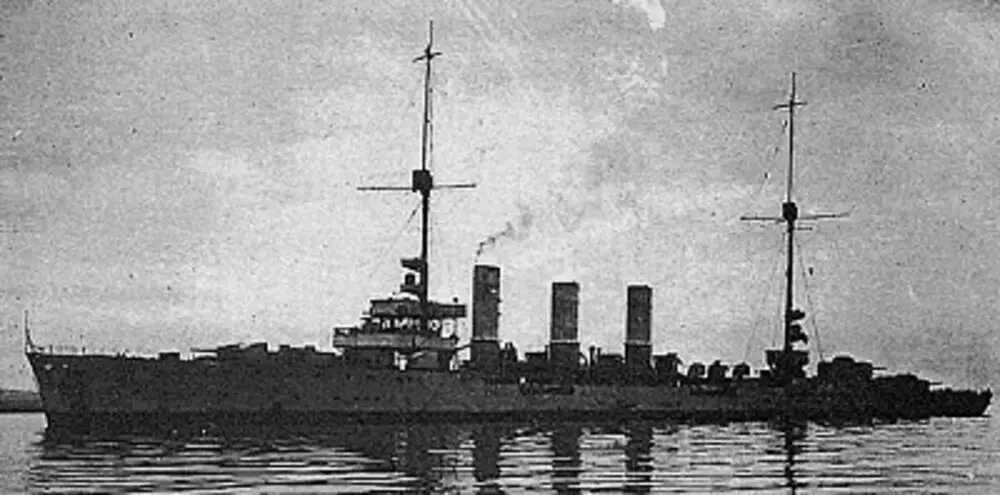
At the end of WW1, Germanys disarmed High Seas fleet was sent to Scapa Flow and left with caretaker crews. The Treaty of Versailles in May 1919 called for the interned ships to be surrendered, but German Rear-Admiral Reuter decided to scuttle them first. On 21 June he sent the fateful signal: Paragraph eleven. Confirm. Fifty-two warships were sunk, the bigggest loss of shipping in a single day. Many of the vessels had been salvaged by the 30s – the cruiser Köln is one of seven warships that remain for divers.
ROYAL OAK
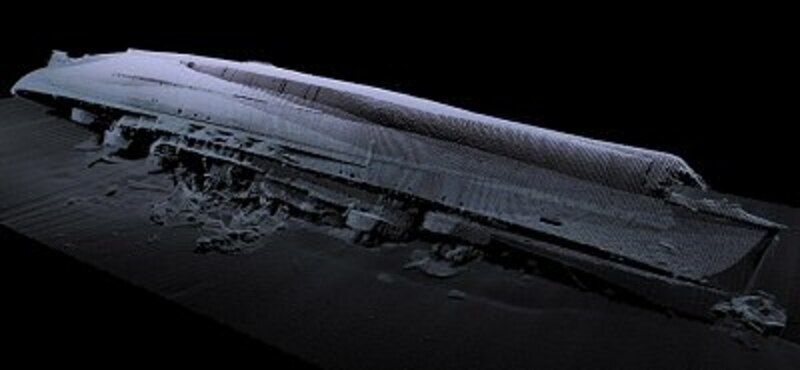
Another view of the British battleship HMS Royal Oak, an early casualty of World War Two when it was torpedoed by a German U-boat in 1939 with the loss of 833 lives. Sport diving is prohibited on this war grave. The sonar imagery reveals clear evidence of four torpedo impacts from the seven fired by U47.
The first hit Royal Oak in the bows and blew the forefoot off. About 12 minutes later, three torpedoes hit in close succession on the starboard side, each one penetrating the protective torpedo bulge and at least two reaching magazines.
The ship rolled over to starboard and, as the weight of the vessel bore on the fore and main masts, these were broken off or bent to port. These now lie on the seabed and stick out from under the inverted hull.
DRESDEN
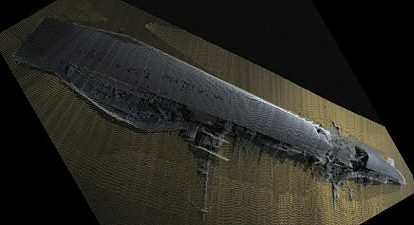
As one of the more completely intact of the High Seas fleet wrecks, the cruiser Dresden is an excellent dive. The whole superstructure together with the mainmast is relatively intact.
It lies on its port side but is heeled over somewhat, with the deck overhanging the seabed. The sonar image shows clearly how the armoured deck at the bow is peeling away from the hull plating, revealing more of the interior.
Significant salvage damage is apparent in the vicinity of the engine-room.
MARKGRAF
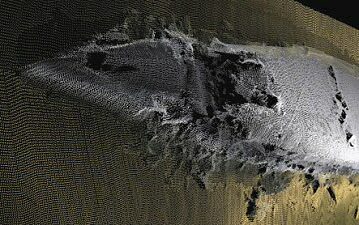
Like all the battleships, the Markgraf lies virtually upside-down. The hull is heeled over slightly on its port side and is the deepest of the German wrecks (at approx 45m to the seabed).
Extensive salvage damage is obvious both at the forward end and aft of the midships area.
KöLN

The cruiser Köln is in very good condition, and lies on its starboard side with the deck almost vertical. The only significant area of salvage damage is the engine-room area.
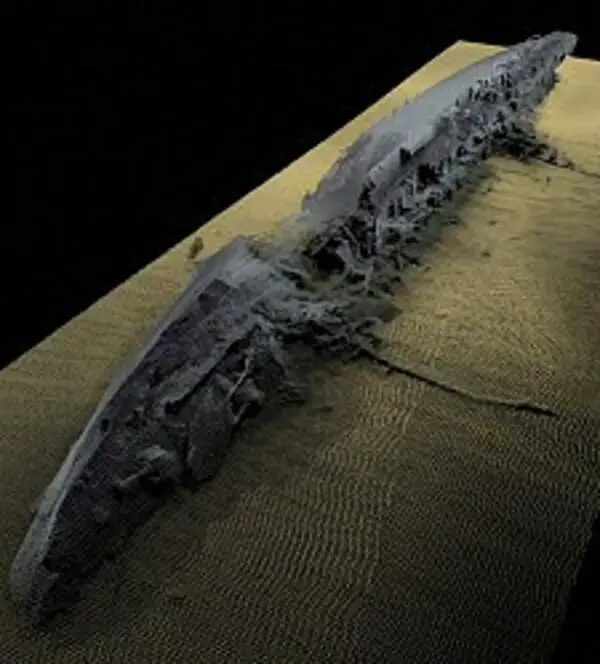
A few notable features easily identifiable on the sonar imagery are the intact masts and the guns toward the stern. The knife-edge bows are impressive. Two views are shown; multiscan sonar allows a wreck to be viewed from any angle, or to be flown around.
KRONPRINZ WILHELM

The battleship Kronprinz lies on its starboard side but almost upside-down, with most of its superstructure embedded in the seabed.
As the sonar imagery shows, this wreck is large and the tangle of wreckage confusing. The seabed around the wreck is littered with debris.
However a number of landmarks are visible to the diver – notably the two masts that stretch out away from the wreck, the four bilge keels on the hull and the rudders at the stern.
KöNIG

The sonar image reveals the battleship König to be virtually upside down, its starboard side only a few feet above the seabed.
It has been extensively salvaged and the access made by salvors through the bottom of the hull is clear to see.
BAYERN TURRETS
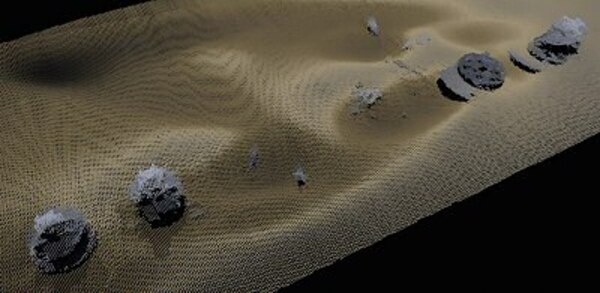
These four turrets from the battleship Bayern fell out when the upturned hull was salvaged in 1933, and they now lie upside down on the seabed.
The large dent in the seabed next to the turrets is where the hull was accidentally dropped during the salvage operations!
BRUMMER

The Brummer, another of the unsalvaged cruisers, lies on its starboard side with its bows shallower than its stern.
Clearly visible on the sonar image, the bridge and mainmast structure is fairly intact, and just aft of the bridge the mid 6in gun with its barrel facing astern is easy to spot.
From amidships aft there is significant salvage damage, providing access to the interior. The rudder can be seen clearly on the sonar image, lying on the seabed.
KARLSRUHE
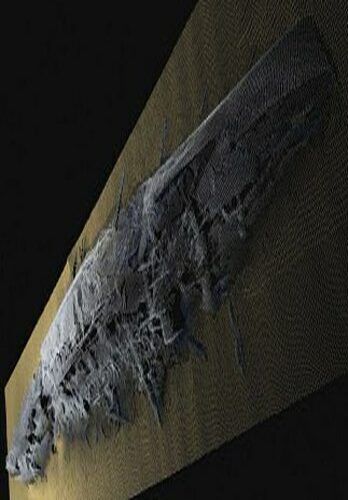
The cruiser Karlsruhe is the shallowest of the German wrecks and lies on its starboard side.
The hull has significant areas of damage and is virtually severed in two where the engine-room salvage has taken place, as the sonar images graphically reveal.
The ADUS team

ADUS was founded by two former members of the Archaeological Diving Unit (ADU), based at the University of St Andrews between 1986 and 2002. Martin Dean (right) is a Senior Research Fellow and DIVERs Archaeological Consultant.
He started sport diving in 1967 and, combining his hobby with work, became the marine archaeologist at the National Maritime Museum at Greenwich in 1981.
He then moved to St Andrews in 1986 to set up the ADU. His ambition is to sonar-survey the Titanic!
Mark Lawrence (right) is the owner of Lochaline Dive Centre on the Sound of Mull as well as a co-researcher at St Andrews.

He learnt to dive in 1979 and, after studying maritime archaeology at university, took up a career in the subject, specialising in the application of remote sensing equipment to archaeological sites under water.
He says he is now a born-again sport diver, following a decade of being bossed around by the surface during commercial diving operations.
Martin and Mark set up ADUS in 2005 to undertake research into high-resolution surveys of wrecks, its principal clients government departments and agencies.
Research into digital visualisation at the University of Dundee became essential to the work of ADUS, which has now become a joint venture between the two.

Chris Rowland (right) is a Senior Lecturer in digital imaging at Dundee. A keen wreck-diver, he combined work with pleasure when he joined ADUS last year.
He is actively involved in research to improve the visualisation of the high-definition sonar data from wrecks.
For further details, visit ADUS website.
If you have any comments or observations about the images, the team would like to hear from you, at info@adus.org.uk.

